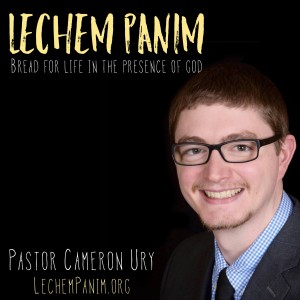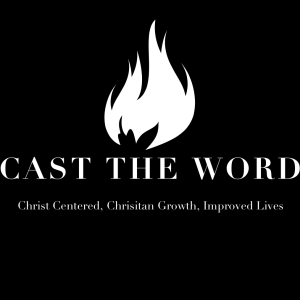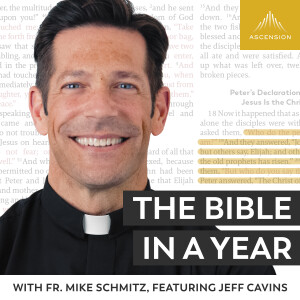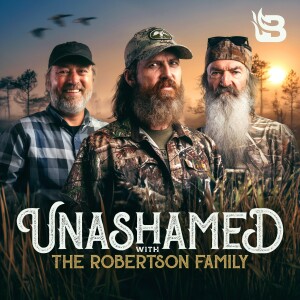

Lechem Panim #13 ”The Veil is Torn” (Exodus 26:31-33) Pastor Cameron Ury
Our scripture today comes from Exodus 26:31-33. It reads….
“31“And you shall make a veil of blue and purple and scarlet yarns and fine twined linen. It shall be made with cherubim skillfully worked into it. 32And you shall hang it on four pillars of acacia overlaid with gold, with hooks of gold, on four bases of silver. 33And you shall hang the veil from the clasps, and bring the ark of the testimony in there within the veil. And the veil shall separate for you the Holy Place from the Most Holy”
As we continue in our study of the Tabernacle of God and move past the altar of incense, we come to the veil that separated the Holy Place from the Holy of Holies, wherein lay the Ark of the Testimony, where the presence of God was (Exodus 25:22). And it was a barrier that could not be crossed saved by the High Priest; and that only once a year. Therefore it was a symbol of our separation from God; not because God didn’t want to have fellowship with us (indeed, that is why the Tabernacle was built; because He wanted to be in the midst of His people); but it was because He is holy; and we (because of our sin) are unholy and therefore unable to dwell in the presence of a holy God. Yet God intended that barrier to be temporary, as He had plan to redeem us from our sins with the blood of His Son in order that we might be allowed into His presence and have direct access to Him.
Some time ago I was Skyping my wife from Israel, and it was funny because I was telling her the various places we had been and the things we had been doing. And (never having been to Israel before) it was just strange for me to say things like "We had lunch on top of Mount Carmel" or "We had a worship service in a boat on the Sea of Galilee." I mean it kind of sounds silly, doesn't it? I mean it's kind of like saying we had a picnic in Narnia or Mordor. I always knew these Biblical places were real, but they had become real to me in a new way. The whole experience was just unreal.
But my favorite part of the trip was coming to Jerusalem. Our team joined in a long tradition of making a pilgrimage to the holy city. During the time of Christ, those living in the land had to come to Jerusalem 3 times a year to worship and offer sacrifices at the Temple. And Jesus (who obeyed every jot and every tittle of the Law) would have done this as well.
Now once you get up to Jerusalem, you find that all around the temple there are literally around a thousand small ritual baths called Mikvehs in which you would dip yourself three times in order to be made ritually clean before you went into the temple to offer sacrifices. And these Mikvehs are used all over the Holy Land for ritual clean-ness, but there is a high concentration of them around the Jewish temple. So you would make yourself clean, then enter the temple.
Now this is something that Jesus no doubt did many times when He came to the Temple. In fact I saw more than one first century Mikveh (still there) that Jesus could've used. But what is ironic is that Jesus didn't need to be cleansed. He was the ultimate cleanser. And we see this over and over throughout the Gospels. Jesus touches the unclean. I think of the unclean woman who had an issue of bleeding touching Jesus (a Rabbi). She could have been stoned for that. But instead of her uncleaness passing to Jesus, His cleanness passed to her and she was made clean. And you have to understand this, because Christ's touching of people like her stretches beyond just mere healing. For us, that's the big event. But the touch goes beyond that and reaches even so far as to make them ritually clean; acceptable in God's sight and in the sight of those in their community, in which they can once again be accepted.
But what I want you to really remember is that Jesus didn't need to be cleansed. He was the ultimate cleanser. And His deepest work of cleansing he performs on the cross.
One of the most incredible experiences of my life took place on our visit to Jerusalem. We were visiting the Church of the Holy Sepulchre, a massive Church that is built on top of the cite where Jesus Christ was most likely crucified and buried. We always think of them as two separate places; that Jesus’ body was carried some distance away. No, Jesus was buried almost in the same place He was crucified. This is confirmed in…
John 19:41-- 41 At the place where Jesus was crucified, there was a garden, and in the garden a new tomb, in which no one had ever been laid.
Now as you can imagine, there was quite a crowd in that Church. And me and my group were standing in line waiting to pass by what is believed by many to be the very rock upon which Jesus was crucified. And though it was under a plastic enclosure, there was a cutout through which you could reach your hand and touch the rock. And I remember coming to that place, kneeling, and touching that rock. And let me tell you, that was a memorable experience. I could have stayed there for hours; to be by the place where my Lord was crucified; at the foot of where that old rugged cross actually stood. But because of the line I had to quickly move on. And after that I wandered to a different part of the Church and down to a lower level. And I ended up joining my uncle who was looking at one site in particular. It was kind of an interesting display, but I didn’t know what it was, so I asked my Uncle and he told me that it was the tomb/grave of Adam. Not the real grave obviously; nobody knows where the real one is, but one that was meant as a representation. And the whole notion seemed kind of strange to me, so I asked my Uncle why it was there. And he explained to me that it was for the symbolism. You see what I hadn’t realized is that we had come directly under the cite I had just been to where I had gotten to touch the place where Christ’s cross had stood. The tomb of Adam was set up directly under that cite because they were trying to communicate something theologically. The blood of Christ, shed on that cross flowed down from the cross, into the ground, all the way down to Adam’s tomb where it touched and cleansed **that original sin he brought into the world. And, in a sense, Adam’s tomb was the very foundation of the cross because without that original sin, there would be no need for a Savior. We have to understand Adam and what his sin brought into the world before we can understand Christ and what He undid.
I want you to ask yourself a question. Is it a coincidence that both the sin that destroyed the world and the obedience that saved it both began in a garden? Ever since I had the privilege of walking in Gethsemane, I have wondered that very thing. The truth is, we have to understand what happened in the Garden of Eden (where Adam said, “My will be done”) before we can understand what happened in the Garden of Gethsemane (where Jesus prayed, “Thy will be done.”), because it was through the obedience of Jesus where Adam had slipped that the grace we are offered in Christ Jesus finds its power. The healing of the Garden of Eden begins in the Garden of Gethsemane. Paul understood this, which is why he wrote in…
Romans 5:19-- 19 For just as through the disobedience of the one man the many were made sinners, so also through the obedience of the one man the many will be made righteous.
You see it is that obedience of Christ that undoes the sin of Adam. Original sin/Adam’s sin can be cleansed in your life and in mine through the work of Jesus that he did on the cross. And the immediate result of that sacrifice is seen in…
Mark 15:37-39-- “37 And Jesus uttered a loud cry and breathed his last”.
“38 And the curtain of the temple was torn in two, from top to bottom. 39 And when the centurion, who stood facing him, saw that in this way he breathed his last, he said, “Truly this man was the Son of God!”
Now the temple was destroyed not long after Christ’s death; just as He had predicted. And this presents a problem for the Jews because they no longer have the Holy of Holies where the presence of God dwells. The closest thing they have to the Holy of Holies is the western wall of Jerusalem, which you have heard is called the Wailing Wall. Jews from all over the world come to pray at that wall because that wall is the closest they can ever get to God. I mean, can you imagine?
For Jews that barrier of the Law; that veil is still there. They are still separated from God. They don't believe the Messiah has come and while we are waiting for His second coming, they are still waiting for His first. They have missed it. And I got to share the Gospel twice on that trip to Israel; once with a Jew on the way there and again with a Jew on the way back, showing them from scripture how Jesus Christ fulfills the prophecies spoken about Him in the Old Testament, particularly Psalm 22, which gives almost a line by line description of the crucifixion of Jesus, mirroring those final events surrounding His death. But they don't accept it because for them the Messiah is a conqueror, not one who surrenders; not one who lays His life down (and I had a Jew tell me that from his own lips).
Now for us, the story is different. We have hope. We don't trust in Holy sites, relics, or laws. Because we know that the veil is torn. Because of what Christ did on the cross, we no longer have a barrier that separates us from God. We have direct access to the Father. Why?
Because Jesus Christ is our Mikveh. It is in and through Him that we are made clean in God's eyes. We are baptized in His blood, which washes us white as snow. We have direct access to the place where God dwells. He is the One through whom we are made clean, Holy, and acceptable in God's sight. And we need to remember to never take that cleansing or that direct access to God for granted. It is a gift beyond all gifts. And seeing these Jews still enslaved to that Law has made me realize just how much we often take those things for granted. We have access to God. Yet are we taking advantage of that access; are we really praying without ceasing. We ought to; for ourselves, our families, our Church; for our nation and yes for the nation of Israel that they may come to know that same hope that we have. Let us commit to do this. Amen.
More Episodes
All Episodes>>You may also like
Creat Yourt Podcast In Minutes
- Full-featured podcast site
- Unlimited storage and bandwidth
- Comprehensive podcast stats
- Distribute to Apple Podcasts, Spotify, and more
- Make money with your podcast













